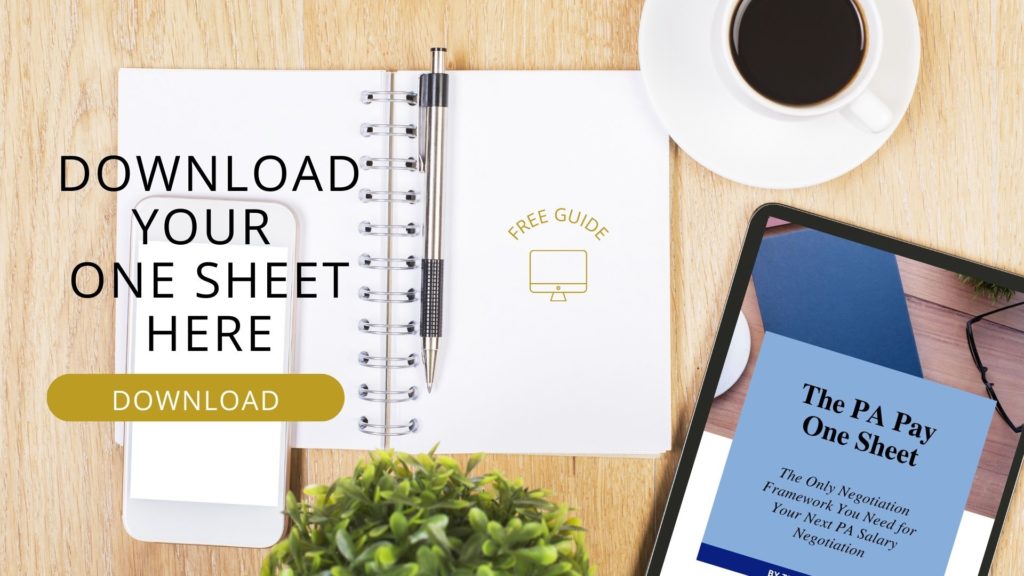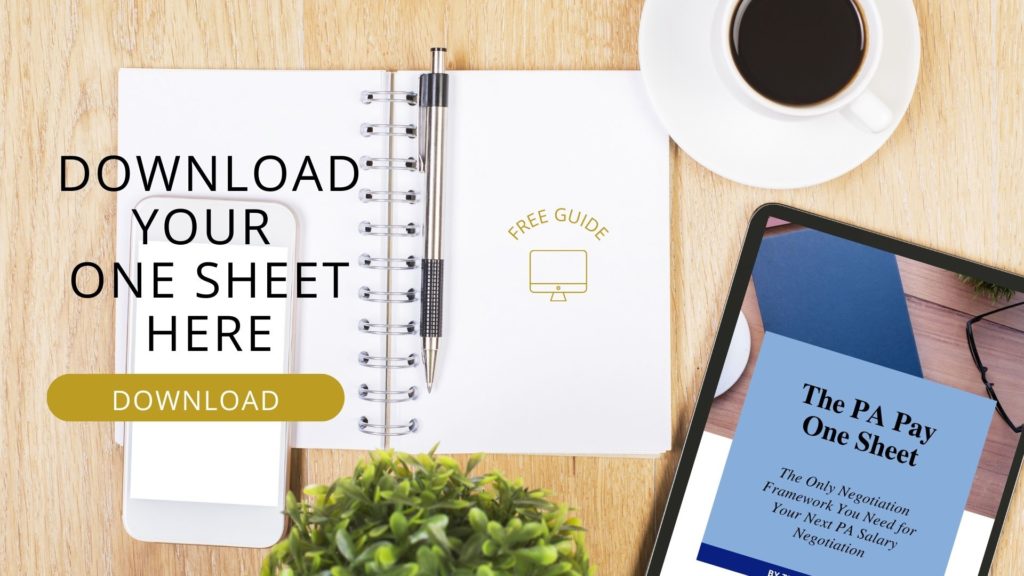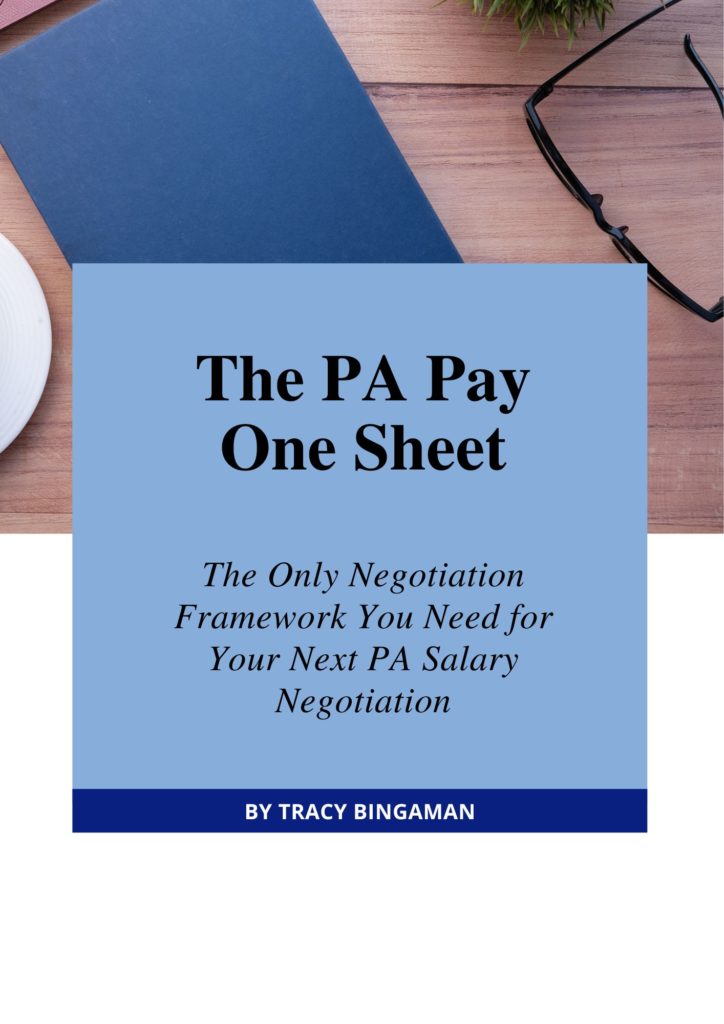Studies show that prepared negotiators come out ahead time and again. This has been shown in many studies and according to www.negotiate.org 80% of the negotiated outcomes are established in the pre-negotiation (read: preparation) phase. Negotiate.org also recommends a systematic approach to negotiations, a framework, if you will, to base your discussions upon. The PA Pay One Sheet is that negotiation framework.

The One Sheet
You can use The PA Pay One Sheet to justify hiring another PA for your department, lobbying for better clinical or clerical support, and vying for that raise you are overdue for. Heck, you can even use The One Sheet to decide where to go to dinner on your next date night or what movie to watch tonight on Netflix.

Goal
First, identify the Goal. What is the desired outcome of the negotiation? Write down the best case scenario when all is said and done. Writing down the outcome helps to cement it in your mind, helps you to anchor high to the best possible result, and holds you accountable to continue to take steps towards this goal throughout discussions.
Summary
Second, state the Summary. Put together 3-5 sentences about the facts that you know of the situation leading up to the point where you are negotiating. This section is designed to set the stage going forward and intended to help your counterpart to agree to the assessment of the situation. Don’t make it emotional and don’t go too deeply into the details.
Initial Assessment
Third, the Initial Assessment. In this section you use the negotiation tool of Label, statements that start with “It seems like”. Use your skills of observation and inquiry to evaluate the situation:
- It seems like ____________________ is valuable to you.
- It seems like you don’t like ___________________.
- It seems like you value _________________.
- It seems like ___________________ makes it easier.
- It seems like you’re reluctant to _________________.
Use this initial assessment as a fact-finding mission to discover the other parties motivations and to uncover more about the situation, which leads to part four:
Values, Risk Factors, and Deal Killers
Fourth, you want to identify what your counterpart (the person you are negotiating with) values, what risk factors exist to the negotiation and what the possible deal killers are. In this Values/Risk Factors/Deal Killers stage of the discussion or negotiation you want to ask specific, calibrated questions that are open ended.
Ask questions such as “how does this affect things in the group?” and “What’s the core issue here?” For a complete list of suggested calibrated questions, download your free PA One Sheet here.
Follow Up Assessment
Fifth, you’ll perform your Follow Up Assessment, circling back to those labels you started with upon your initial assessment, but being even more specific about your observation and assessments.
Non-Cash Offers
Lastly, before heading into a negotiation, consider the Non-Cash Offers you’d be willing to accept, if you are negotiating for money. Consider these the lifestyle modifications of your negotiation. What things could improve SO MUCH that you’d let go of the monetary aspect and do it for that alone. Have these lifestyle modifications in your back pocket if the budget doesn’t support your primary monetary requests.
You can print out your own copy of the One Sheet here and begin using it to feel better prepared for your next negotiation, whether it’s at work or at home.

